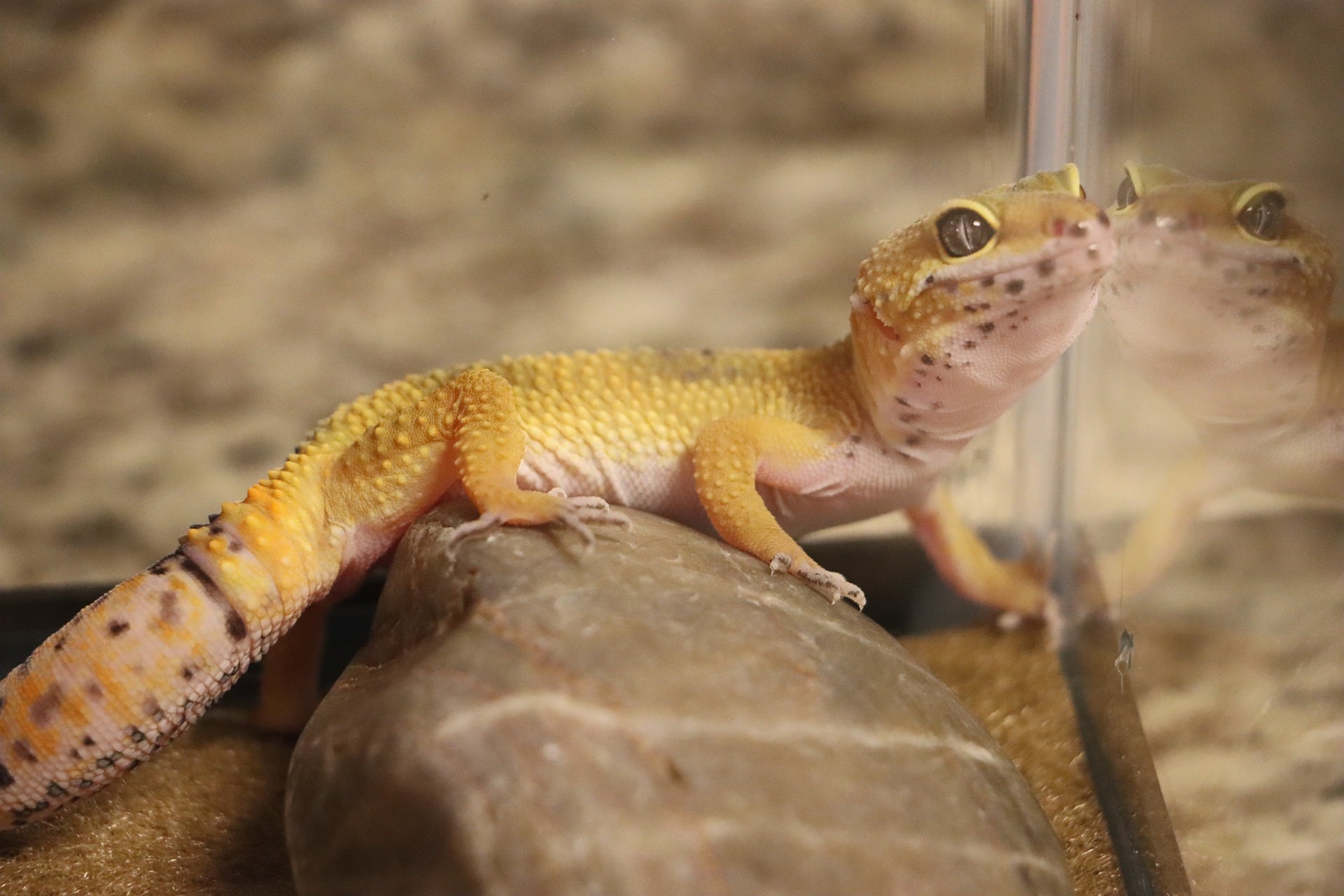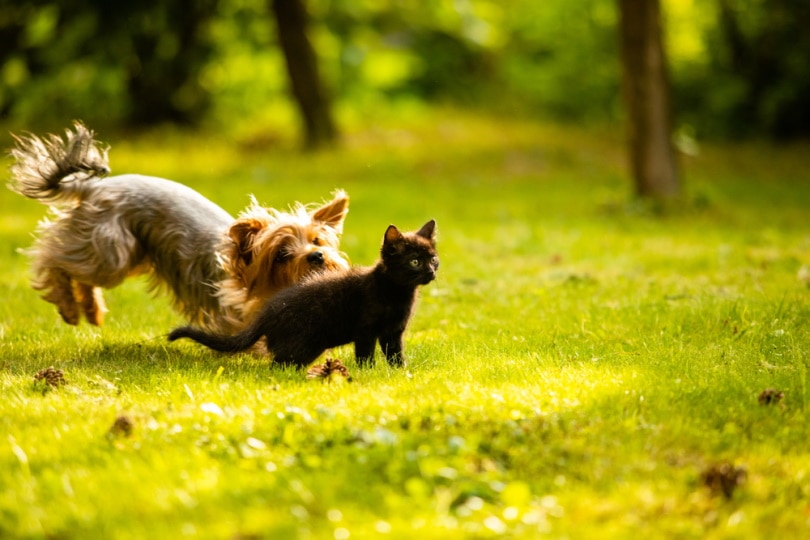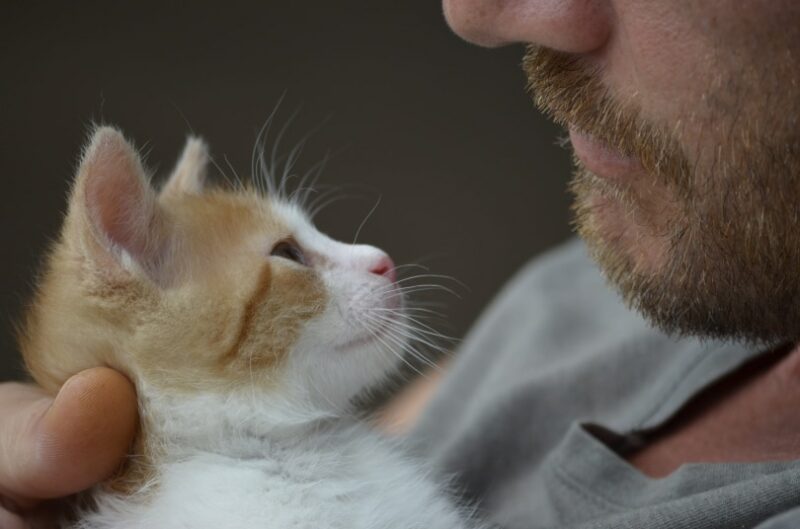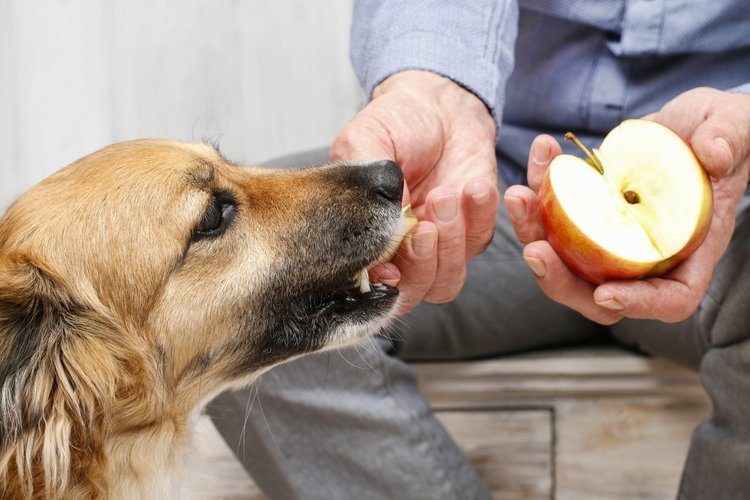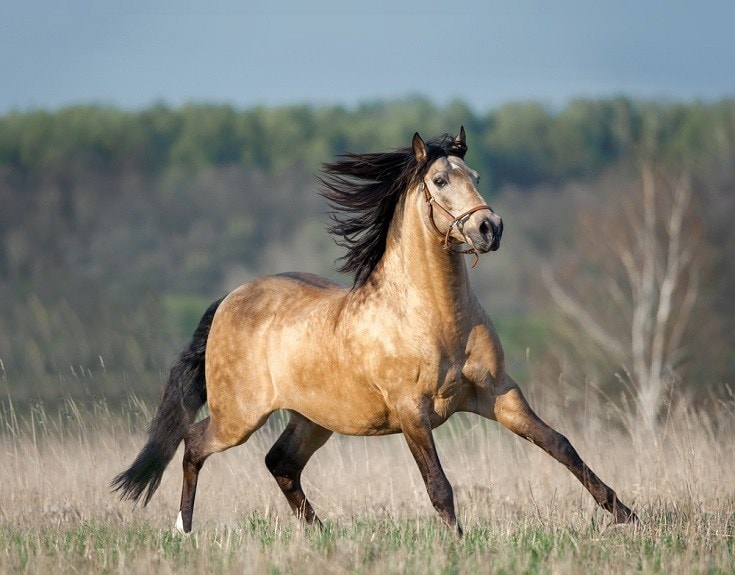
Majestic and unique, dun horses have a distinctly wild appearance. Their beautiful coloration is caused by a dilution gene that lightens the body color without lightening the legs, ears, mane, tail, and often the head. Duns aren’t a breed of their own. Almost any breed can be dun-colored, though some of the most common are Mustangs, American Quarter Horses, and Highland Ponies.
The 4 Dun Features
Certain features immediately differentiate a true dun from other types of horses, even though certain colorations like buckskin seem pretty similar at first glance.
1. Dorsal Stripe

All duns have a dark dorsal stripe that runs down the middle of their back. This stripe can sometimes extend all the way into the tail.
2. Zebra Striped Legs

One of the most unique features shared by some dun horses is zebra-like stripes on the legs. All duns have dark markings on their legs, but they don’t all have zebra stripes.
3. Face Masks
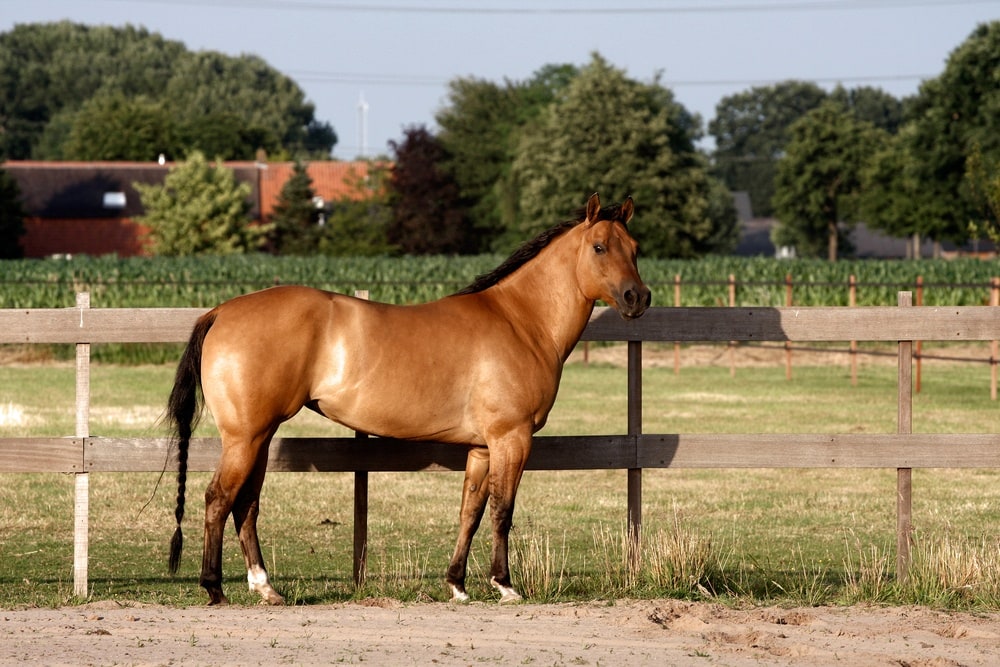
Sometimes, the gene that lightens the body color of dun horses doesn’t extend to the face, leaving it the darker color of the points and legs. This can cover all or some of the face.
4. Black Points

Duns have black points on their lower legs and around their ears.
The 2 Different Dun Horse Colors
The dun gene only affects the genes for black and red coats, so there are two main types of dun horses.
1. Classic Dun

The base color of a classic dun is bay, allowing them to vary in hue from a light tan to a darker brown. All the points are black on a classic dun.
2. Red Dun
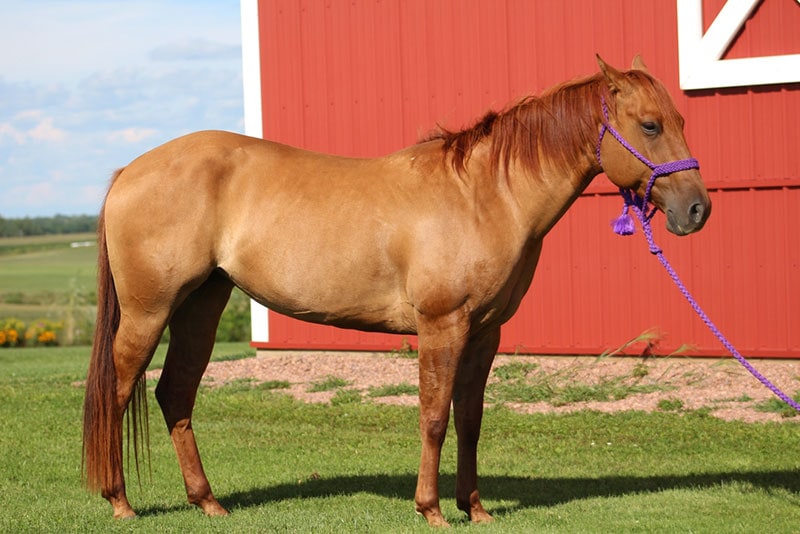
Red duns have no black points because of their sorrel base color. They still have the standard striping that you’ll find on classic duns.
Final Thoughts
With dark points, manes, tails, and lighter bodies, duns are one of the most unique-looking members of the equine family. They’re only a color breed since dun colorations can appear in many horse breeds. Still, their distinct features make them easily recognizable and they’re the image that many people see when they think of wild horses.
See: Can Horses See in The Dark?
Featured Image Credit: Olga_i, Shutterstock



